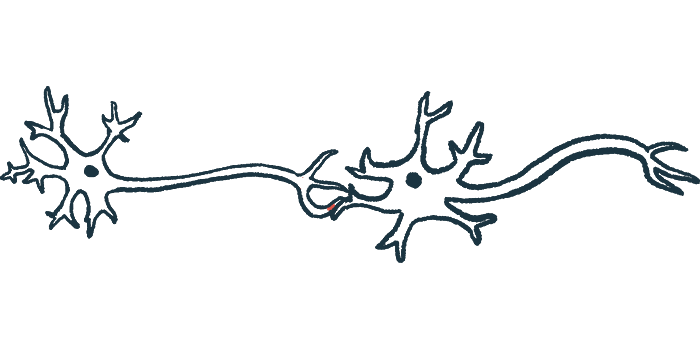NU-9 Is Now AKV9, and Doing Well in Preclinical Studies

AKAVA Therapeutics’ experimental therapy AKV9, formerly NU-9, was superior to approved therapies for amyotrophic lateral sclerosis (ALS) at improving the health of lab-grown upper motor neurons from a mouse model of the disease, a study shows.
Upper motor neurons are one of the two types of specialized nerve cells that control voluntary movement and that progressively die in people with ALS; the other type is lower motor neurons.
Notably, AKV9’s benefits were even greater when combined with each of the approved therapies, which have distinct mechanisms of action to AKV9.
These findings, along with previous promising preclinical data, highlight AKV9 as a potentially effective therapy for ALS that could be even more beneficial to patients when combined with standard treatment, the researchers noted.
The study, “NU-9 improves health of hSOD1G93A mouse upper motor neurons in vitro, especially in combination with riluzole or edaravone,” was published in the journal Scientific Reports.
ALS is caused by the progressive death of upper motor neurons — nerve cells that carry voluntary movement signals from the brain to the spinal cord — and lower motor neurons, which send these signals from the spinal cord to muscles.
It is typically characterized by the toxic buildup and clumping of certain proteins — most commonly SOD1 and TDP-43 — and problems in mitochondria and endoplasmic reticulum (ER) within motor neurons. Mitochondria are the cells’ powerhouses, while the ER is a cellular organelle involved in protein production, modification, and transport.
Notably, “to date none of the compounds in clinical trials have been tested for improving the health of diseased upper motor neurons (UMNs),” the researchers wrote, also noting “an urgent need to develop preclinical assays that include UMN health as a readout.”
AKV9 is a compound previously shown to reduce SOD1 aggregation in lab-grown cells, have low toxicity, and cross the blood-brain barrier. This highly selective membrane tightly regulates which substances from the bloodstream can access the CNS (the brain and spinal cord), and crossing it is often a challenge for CNS-targeting therapies.
Additional research led by P. Hande Ozdinler, PhD, an associate professor of neurology at Northwestern University Feinberg School of Medicine, and Richard B. Silverman, who invented the experimental ALS treatment and later founded AKAVA, showed that AKV9 improved motor function of two different mouse models of ALS by reversing the damage of upper motor neurons.
This was the first compound shown to restore the health of diseased upper motor neurons in ALS models. These benefits were accompanied with improvements in the structure and integrity of mitochondria and ER in these cells.
Now, Silverman, Ozdinler, and colleagues evaluated whether AKV9 was superior to FDA-approved ALS therapies — riluzole (sold as Rilutek, Tiglutik, or Exservan) and Radicava (edaravone) — at improving the health of upper motor neurons in a mouse model of SOD1-associated ALS.
Because the experimental therapy has a different mechanism of action relative to approved therapies, they also assessed whether combining AKV9 with these treatments resulted in greater benefits.
The team first developed a SOD1-ALS mouse model, in which upper motor neurons produced a fluorescent protein so they could be identified easily, analyzed, and counted. Slices of the animals’ motor cortex, the brain region mainly responsible for movement, were grown in the lab and treated with either therapy at doses detected in CNS following optimal dosage.
Upper motor neuron health was then assessed through the length and branching/arborization of their nerve fibers, or axons, which usually are reduced in ALS.
Results showed that all three therapies increased UMN’s axonal length and branching/arborization, but these effects were more pronounced with AKV9. Notably, combining AKV9 with either riluzole or Radicava led to even greater effects than those seen with any drug alone.
These findings highlighted that “in the presence of NU-9, diseased UMNs not only extended longer axons, but they also displayed increased branching and arborization, a characteristic that is important for UMNs to recognize and innervate their targets,” the researchers wrote.
For a therapy to be effective in ALS, “it is important for that drug to improve axon outgrowth and axon health,” Ozdinler said in a press release. “This is very important for connecting the brain and the spinal cord and for revitalizing the motor neuron circuitry that degenerates in patients.”
The company now is conducting additional animal safety studies needed for submitting a request to the U.S. Food and Drug Administration for permission to test the therapy in first-in-human clinical trials.
“NU-9 has a new mechanism of action, and it needs to be tested in humans for its efficacy in the treatment of ALS,” said Silverman, the study’s co-senior author and the Patrick G. Ryan/Aon Professor at Northwestern University in Illinois.
“If everything goes well, we hope to start with healthy volunteers in a Phase 1 clinical trial early in 2023,” added Silverman.
Should this trial be cleared and conducted within the expected date, a Phase 2 clinical trial in people with ALS may begin in early 2024.
“It is a long process — possibly 10 to 12 years — to discover and bring a new [therapy] to the market,” Silverman said. “But [AKV9] has us very excited and hopeful about its possibilities to improve the lives of ALS patients, who have been without hope for so long.”







